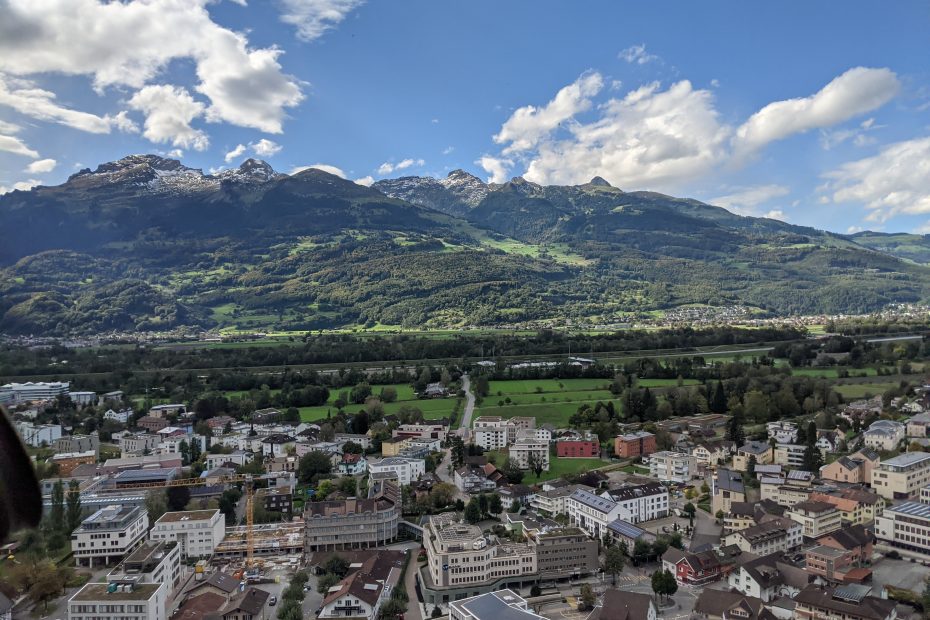Table of Contents
Introduction
Nestled between Switzerland and Austria, the tiny European country of Liechtenstein offers visitors a unique opportunity to immerse themselves in a rich culture steeped in tradition and history. Though Liechtenstein is small in size, spanning just 62 square miles, its picturesque landscapes, quaint villages, medieval castles, and thriving art scene provide travelers with an unforgettable cultural experience.
Liechtenstein’s Picturesque Landscapes
Liechtenstein’s breathtaking natural scenery is characterized by the Rhine River valley cutting through the rugged Alps Mountains. The Rhine River serves as a natural border between Liechtenstein and Switzerland. Take a stroll along the river in Vaduz to admire the charming wooden bridges and vineyards dotting the valley. For panoramic views of the Rhine Valley, head to Gaflei, a prominent lookout point situated atop a rocky outcrop.
The towering peaks of the Alps dominate Liechtenstein’s landscape. Roughly two-thirds of the country’s terrain is mountainous. Go hiking or skiing in Malbun, a resort village nestled in the Saminatal Valley. Marvel at the jagged ridges and snowcapped summits of the majestic mountains surrounding this scenic hamlet.
Experience Liechtenstein’s Unique Traditions
Every August 15th, Liechtenstein celebrates its National Day with festivities that immerse visitors in local culture. Watch as citizens don colorful traditional attire and march through the streets of Vaduz. Enjoy live folk music and dancing while sampling flavors of Liechtenstein cuisine like kasknopfle pasta and rödakäskiachla cheese pancakes.
Folk dances and alpenhorn music are integral parts of Liechtenstein’s heritage. Attend a cultural performance to experience traditional yodeling, dancing, and alpenhorn playing firsthand. Numerous troupes put on lively shows at venues across the country.
Liechtenstein’s culinary traditions reflect influences from neighboring Austria, Switzerland, and Germany. Be sure to try melt-in-your-mouth caramelized onion tartlets, hearty cheese spaetzle, and fluffy rye bread. Wash it all down with a glass of locally produced Riesling white wine.
Liechtenstein’s Rich History
For an immersion into Liechtenstein’s history, tour the Gothic-style Vaduz Castle perched atop a hill overlooking the capital city. Dating back to the 12th century, this castle has served as the residence of Liechtenstein’s royal family for over 300 years. View antique weapons, portraits, and opulent staterooms. The castle grounds also contain a quaint wine cellar restaurant.
Gain insight into Liechtenstein’s legacy as a leader in postage stamp production at the Postal Museum. See rare stamps and learn about printing methods through interactive exhibits. Nearby, the Liechtenstein City Museum sheds light on the country’s cultural heritage through artifacts, photographs, and audiovisual displays.
Get Immersed in the Art Scene
Liechtenstein boasts an impressive fine art culture. The Kunstmuseum Liechtenstein possesses a massive collection of modern and contemporary works by artists like Picasso, Kandinsky, and Warhol. Meanwhile, the Hilti Art Foundation focuses on minimalist and conceptual art within a strikingly modern architectural space. Don’t miss Galerie Gutenberg, which exhibits avant-garde installations and sculpture. Attend one of the many openings and events to mingle with local artists and curators.
Outdoor Activities in Liechtenstein
Between immersing in museums and galleries, enjoy Liechtenstein’s natural splendor through outdoor pursuits. Go hiking through breathtaking mountain scenery along trails like the Fürstensteig and Schesaplana routes. Rent a bike and cycle through quaint villages while taking in the fresh alpine air. During winter, locals and visitors alike flock to Malbun for world-class skiing and snowboarding.
Conclusion
Although diminutive in size, Liechtenstein offers big cultural experiences. From the soaring Alps to medieval castles, along with thriving artistic traditions, Liechtenstein provides an immersion into captivating history and scenery. Visitors will gain a new appreciation for this tiny country’s outsized cultural legacy. The diversity of landscapes, customs, history, cuisine, and arts in Liechtenstein make it an ideal destination for travelers seeking a deeper connection with Europe.
Frequently Asked Questions About Visiting Liechtenstein
What is the best time of year to visit Liechtenstein?
The best time to visit Liechtenstein is during the summer months of June through August when the weather is mild and sunny. This is the peak tourism season. Keep in mind that some attractions may be crowded.
How many days are needed to fully experience Liechtenstein’s culture?
3-4 days is sufficient to immerse yourself in Liechtenstein’s rich cultural offerings. This allows enough time to see the top museums and galleries in Vaduz, tour Vaduz Castle, hike in the Alps, and attend a cultural performance.
What is transportation like in Liechtenstein?
Liechtenstein has an extensive bus system connecting all regions. Purchase the Liechtenstein Card for unlimited use of buses plus free entries to museums. Taxis are available in Vaduz but quite expensive for longer trips. Renting a car is another option for getting around.
Is Liechtenstein expensive to visit?
Yes, Liechtenstein is one of the most expensive countries in Europe. However, there are ways to visit on a budget. Look for discounted museum passes, stay at reasonably-priced inns outside Vaduz, and limit dining at expensive restaurants. Groceries and picnics can help cut costs.
Is English widely spoken in Liechtenstein?
Since tourism is a major industry, English is spoken and understood by most people working in the service industry. Some basic German phrases can be helpful when venturing outside tourist centers. Fortunately, many locals speak excellent English.
